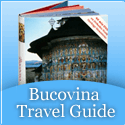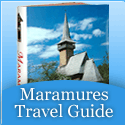Sarmisegetuza
Sarmisegetuza Regia  is the name of the capital of pre-Roman Dacia, actually a complex of sanctuaries, situated in The Mountains of Orastie, at an altitude of 1,200 meters, from which the most remarkable are “Sanctuarul Mare Rotund” (Big Rounded Sanctuary) and “Soarele de andezit” (The Andesito Sun).
is the name of the capital of pre-Roman Dacia, actually a complex of sanctuaries, situated in The Mountains of Orastie, at an altitude of 1,200 meters, from which the most remarkable are “Sanctuarul Mare Rotund” (Big Rounded Sanctuary) and “Soarele de andezit” (The Andesito Sun).
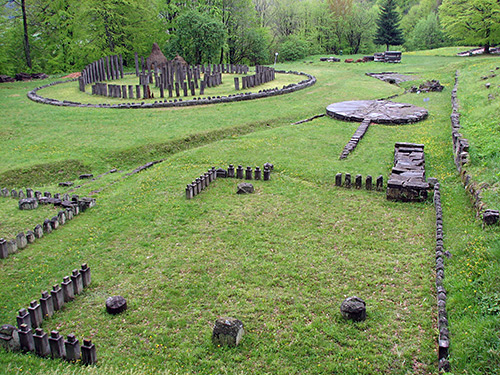
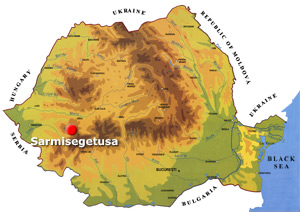
Sarmisegetusa Regia
Most of the archeologists assert that the city was raised in between the 3rd and the 2nd century before Christ, while others sustain that it would be at least 600 years older than that. One of the reasons of this dispute could be the striking resemblance of the Big Rounded Sanctuary with those of Stonehenge. It seems that the same architect has conceived them both, the only difference being that the one from Orastie is smaller. Then, The Andesito Sun can be easily resembled to the famous Maya calendar.
{tours-banner-scroll}
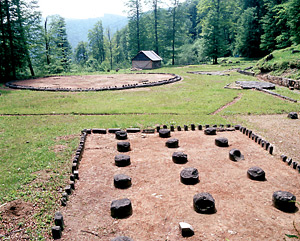
The capital of Dacia was conquered and destroyed by the Roman army in the year 106 after Christ. Its ruins were revealed for the first time in 1923 due to the diggings made under the lead of professor D. M. Teodorescu from the department of archeology of the University in Cluj Napoca, then continued by the academician professor C. Daicoviciu and by Hadrian Daicoviciu until 1944.
The road is not generous for those who want to get at the ruins of the ancient Dacian fortress. If there is asphalt laid from Orastie till Costesti, few are those who dare continue their trip by car following the next 20 km on forestry path. As a matter o fact Orastie can be considered a departure point for the Dacian fortresses; Sarmisegetuza Regia, The Fortress of Costesti (18 km away from Orastie), the Stone Walls of the Fortress from Blidaru (4km away from Orastie).
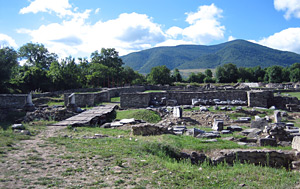
At about 40 km away from Orastie Mountains, in the department of Sarmisegetuza, in the South- West of the Hateg Depression, where are the ruins of the other fortress bearing the same name, capital of Roman Dacia, also called Ulpia Traiana Sarmisegetuza, founded by the governor Terentius Scaurianus between 108 – 110.For two centuries, it represented the political and administrative center of the province of Dacia.
The sieges of the governor, of the administration, of the financial system, of the military, economic and religious centers were situated inside the fortress. During the rule of Emperor Hadrian (117-138), Sarmisegetuza was called Colonia Ulpia Traiana Sarmisegetuza, and then during the period 222-235, to its name was added the epithet of metropolis.
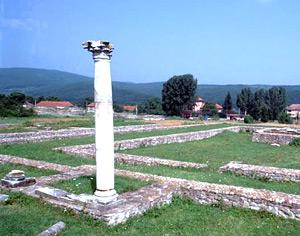
Ulpia Traiana Sarmisegetusa
In other words, the ruins of Ulpia Traiana Sarmisegetuza stand for the most interesting touristic attraction in the area, offering the tourists the image of a Roman city, resembling many others, with the Forum, palace of the augustals, the thermae, the amphitheatre, the public and private institutions. In 1982, there was inaugurated a museum where there are exposed objects in silver and bronze, ceramics, statues of the Roman gods, coin, funeral stones, medallions, mosaics and other objects.
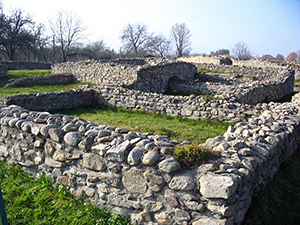
Other interest points in the area are represented by the Fortress of Colt, the Fortress of Malaiesti, the Densus Church, the Church from Strei and also the Fortress of Hateg. Tourists cand get here using the national road DN 68 Hateg-Caransebes, or by train, following the route Petrosani-Subcetate or Simeria-Subcetate. Also, the possibilities of accommodation are multiple due to the touristic boarding houses and to the special places for pitching the tent in the area surrounding the colony.
Beside the Roman fortress, tourists can also visit Sarmisegetuza, the caves Cioclovina, Ohaba Ponor, the Monastery of Prislop and the “Fortress of Colt” in the village of Suseni.
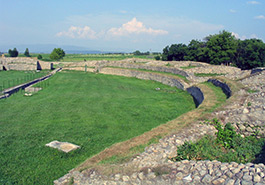
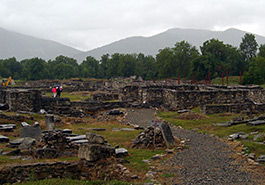
{banner-oamenilocurien}

 Corvinilor Castle
Corvinilor Castle Densus Church
Densus Church Romania Map
Romania Map


